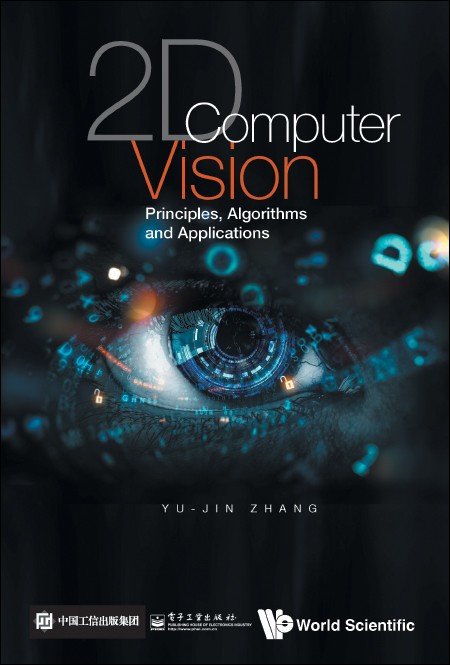|
2D Computer Vision: Principles, Algorithms and Applications Yu-Jin ZHANG World Scientific£¬2022 |
|
|
|
ISBN: 9789811245084 (hardcover) |
|
Preface |
This book is a special textbook that introduces the basic principles, typical methods and practical techniques of 2D computer vision. It can provide the first computer vision course service for undergraduates of related majors in university and higher engineering colleges, and then they can study "3D Computer Vision: Principle, Algorithm, and Applications:". This book mainly covers the introductory content of computer vision from a selection of materials. This book is mainly for information majors, but also takes into account learners with different professional backgrounds. This book is self-contained in contents, and also considers the needs of self-study readers. Readers can not only solve some specific problems in practical applications, but also lay a foundation for further study and research on high-level computer vision technology. This book pays more attention to practicality in writing. Considering that computer vision technology has been involved in many professional fields (but in which not all people specialized in computer vision technology) in recent years, so this book does not emphasize the theoretical system too much, while minimizes the formula derivation, and focuses on commonly used methods. This book provides many examples, through intuitive explanation to help readers understand abstract concepts. A subject index (marked in bold in the text) is given at the end of the book. From the structural point of view, this book has 13 chapters, two appendices, answers to self-test questions, and subject index. Under these 17 first-level headings, there are 109 second-level headings (sections), and 176 third-level headings (sub-sections). The book has a total of nearly 500,000 words (including figures, drawings, tables, formulas, etc.), and a total of 278 numbered pictures, 30 numbered tables, and 497 numbered formulas. In order to facilitate teaching and understanding, this book gives a total of 121 examples of various types and 233 self-test questions (all with hints and answers). In addition, there are a catalog of more than 100 references and nearly 400 terms used for indexing at the end of the book. This book generally considers three aspects from the knowledge requirements of the prerequisite courses: (i) mathematics, including linear algebra and matrix theory, as well as basic knowledge about statistics, probability theory and random modeling. (ii) computer science, including the mastery of computer software technology, the understanding of computer structure system, and the application of computer programming methods. (iii) electronics, including on the one hand, the characteristics and principles of electronic equipment, and on the other hand, circuit design and other content. In addition, it is best to study this book after finishing the course on signal processing. Thanks to the editors of the publisher for carefully composing the manuscript, followed by serious review and attentive modifications. Finally, the author thanks his wife Yun HE and daughter Heming ZHANG for their understanding and support in all aspects. |
|
Contents |
(More in "Detailed contents")
|
Back to Books ·µ»ØÊé¼® |
|---|---|
